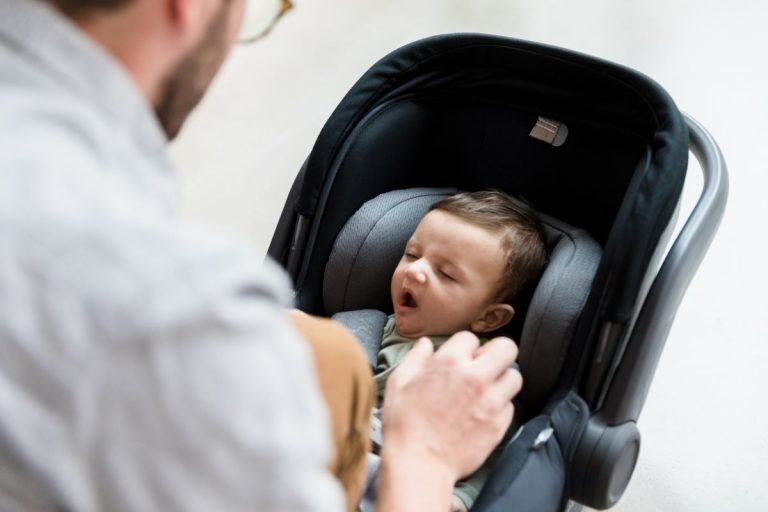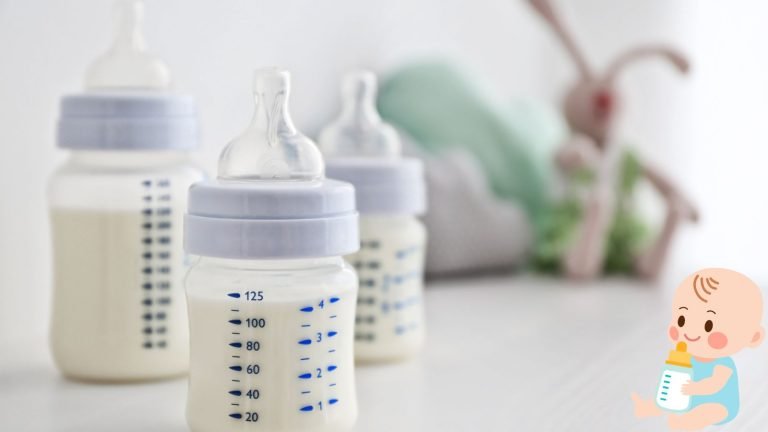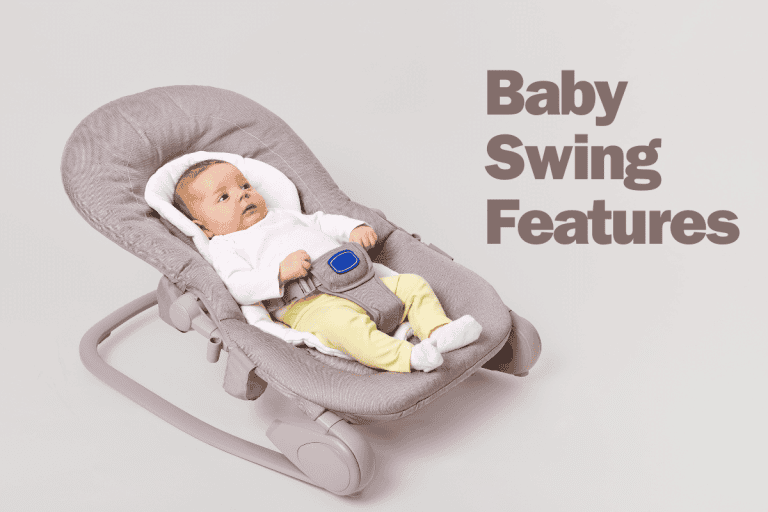Rotating Car Seats vs Traditional Car Seats: Which Is Best for Your Children Safety in 2025?
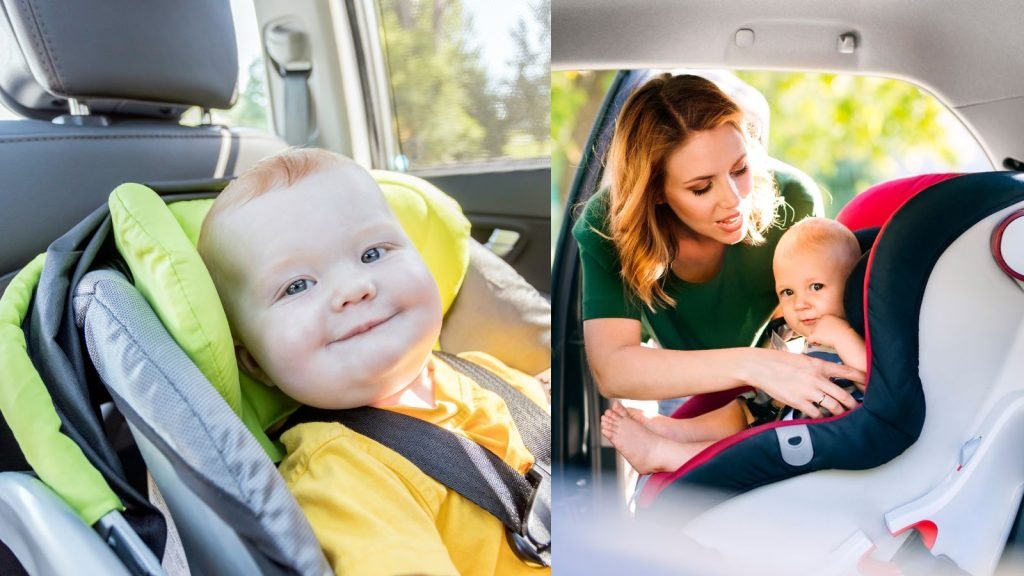
As a parent, your top priority is to keep your child safe and comfortable while traveling in the car. However, with various rotating car seats and traditional models available in the market, deciding which one to choose can be unclear.
This article compares rotating car seats vs traditional car seats, focusing on the key differences in safety features, budget, ease of use, and more to help you make an informed decision.
By the end, you will be able to determine which type of car seat best suits your family’s requirements and offers the best value for money.
key Takeaway – Rotating Car Seats vs Traditional Car Seats
- Rotating car seats allow extended rear-facing and easy switching between rear- and forward-facing positions. However, they tend to be more expensive than traditional car seats.
- Traditional car seats are generally more affordable, but you must constantly purchase new seats as your child grows from infant to toddler to older child.
- For maximum safety and convenience, rotating convertible car seats are worth the investment for many families seeking long-term use.
- When deciding between rotating and traditional car seat types, consider your budget, needs for the rear-facing duration, vehicle fit, and ease of use.
What Are Rotating Car Seats?
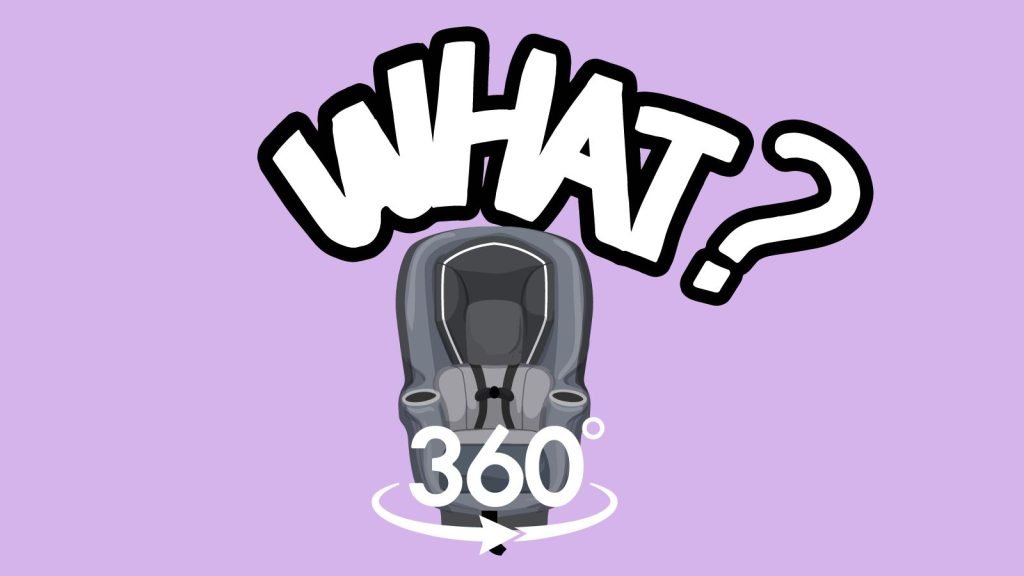
Rotating Seat for Front/Rear Facing
Rotating car seats are designed to allow parents to change the direction the seat faces by pressing a button. With this feature, you can keep your child rear-facing for as long as possible and switch to forward-facing when they reach the manufacturer’s height and weight limits for that direction.
The rotating feature provides flexibility without the need to uninstall and reinstall the car seat each time. Models like the Evenflo Revolve360 and Graco Extend2Fit Rotating make switching between rear- and forward-facing positions easy.
Higher Limits than Traditional Seats
Rotating car seats have higher weight and height limits when rear-facing than traditional infant and convertible seats. For instance, the Evenflo Revolve360 can accommodate up to 40 pounds of weight when rear-facing, while typical convertible seats only support 30-35 pounds.
This allows children to remain in the rear-facing position longer as they grow. Additionally, the higher weight and height limits of rotating seats mean they can potentially last for years longer than infant and convertible seats with lower limits.
Overview of Traditional Car Seats
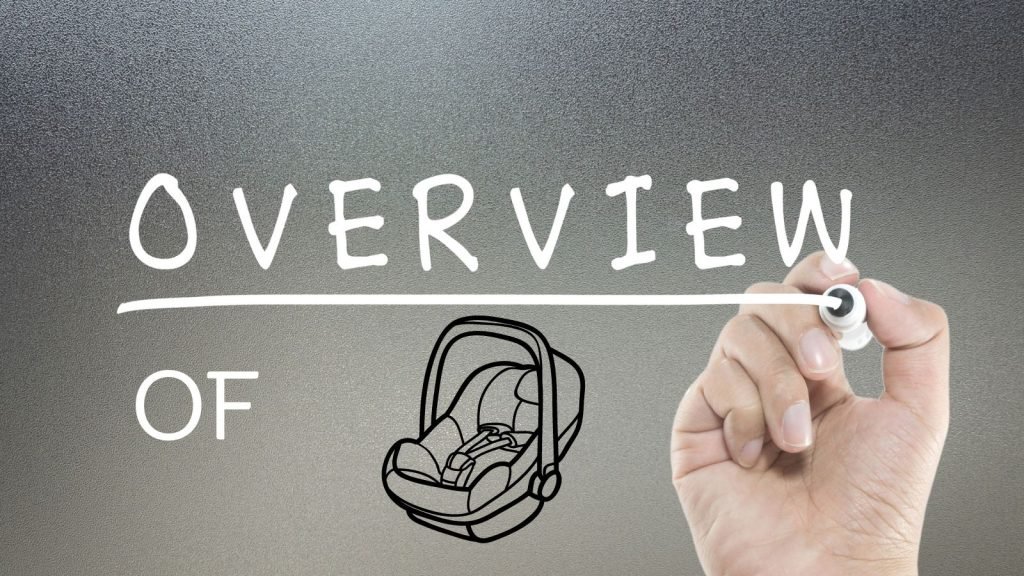
Types: Infant, Convertible, Boosters
There are three main types of traditional car seats available in the market. The first type is the infant seat, which is only rear-facing and is suitable for newborns up to 22-35 pounds, depending on the model.
The second type is the convertible seat, which can be used both rear-facing and forward-facing once the child meets the height and weight requirements. The third type of car seat is the booster, designed for older kids who have outgrown their harnessed seats.
Rear, Front, High-Back, Backless
Car seats are essential to keeping children safe while traveling in a vehicle. They come in various modes, including rear-facing, forward-facing, high-back and backless boosters.
However, transitioning from one mode to another can be challenging, as it usually involves uninstalling and reinstalling the seat. Most car seats do not allow for the convenient swiveling between rear-facing and forward-facing modes, which can be inconvenient for parents and caregivers.
Lower Limits; More Seats as Child Grows
Traditional car seats have weight and height limits generally lower than rotating options. As a result, parents often have to purchase an infant seat, then a convertible seat, and finally a booster as the child grows.
With a rotating seat, one seat can potentially last longer, meaning fewer seats need to be purchased over time.
Generally Cheaper than Rotating Seats
Traditional car seats have one advantage over rotating car seats: their affordability. Infant seats can be purchased for as low as $60-100, while convertible seats are typically priced between $150-300.
In contrast, rotating car seats can cost anywhere from $250 to $400. This makes traditional car seats an economical choice and a good option for families looking to save money.
Safety Comparison
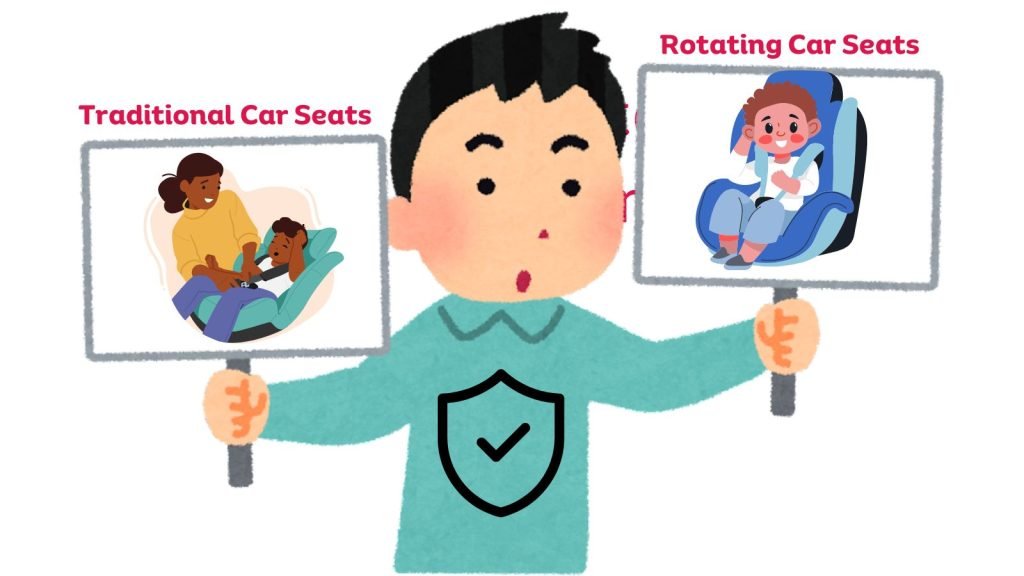
Safety Studies: Extended Rear-Facing with Rotating Seats
Research studies have shown that extended rear-facing car seats offer toddlers and young children the best safety.
The American Academy of Pediatrics recommends placing children in rear-facing seats for as long as possible. The convenience of rotating seats makes extended rear-facing more practical by eliminating the need for the seat to be uninstalled and reinstalled.
However, some safety experts warn that the rotating function may introduce potential risks that are not present with traditional seats. Therefore, more safety testing on rotating seats is needed to ensure their safety over time.
For parents who prioritize safety, checking out Car Seat Safety Tips is essential to ensure proper installation and usage.
Traditional seats time-tested and well-reviewed
Although new car seats are emerging on the market, traditional seats have been used for many years and have proven safe with high ratings. Many widely used infant and convertible seats have excellent crash test results and reviews.
The simplicity of traditional fixed rear- and forward-facing seats eliminates any ambiguity associated with movable parts. Therefore, traditional seats may provide peace of mind in terms of safety.
Installation: LATCH system vs. seat belt
It is important to properly install both car seats, whether equipped with the LATCH system or seat belt. Although the installation procedure may differ from model to model, car seats that rotate could challenge achieving a secure fit, which is crucial for safety.
On the other hand, traditional car seats usually encounter fewer installation problems when installed correctly in the rear-facing or forward-facing position.
Chest clips and harnesses – ease of proper use
Harnesses and chest clips are crucial for safety. Traditional fixed seats may make proper positioning easier versus potential issues of rotating and adjusting straps on rotating seats. However, both seat types effectively restrain and protect children when used correctly.
Convenience Factors

Rotating Button: No Reinstallation Needed
Rotating seats offer the significant advantage of easily switching between rear-facing and forward-facing positions with just a push of a button.
There’s no need to uninstall and reinstall the car seat every time, making it a convenient option for parents. The rotating feature makes it easier to keep your child in the rear-facing position for longer before rotating to forward-facing.
Higher Limits: Longer Use for Child
The higher weight and height limits of rotating car seats allow for extended use as kids grow. Rather than transitioning from an infant seat to a convertible and finally a booster, one rotating seat can potentially last years longer. This saves the hassle of switching out seats as often.
Space Saver: Less Seat Switching
With traditional seats, you may need an infant seat, a convertible seat, and a booster to cover all age ranges. With a rotating seat, the extended use means fewer seats over time. Less seat switching can help maximize space, especially for growing families.
Seat Transfer Between Cars
Installing car seats properly each time is essential but can be a headache. With a rotating seat, you only have to install it once. Then, the convenience of the rotating function allows easy transfer between vehicles without reinstalling. This can make travel and transporting kids between cars much simpler.
Child Comfort

Forward/Backward Facing Capability in Rotating Seats
A key comfort factor of rotating seats is having children face forward or backward. For some kids, facing the rear soothes and prevents motion sickness. For others, being able to see ahead in forward-facing mode reduces fussiness. The flexibility of rotating between the rear and forward can optimize comfort.
Comfort for Long Trip Naps?
Both types of seats allow for reclining, which is useful for napping. Some experts believe that traditional seats may offer more stability for sleeping, while others find that rotating seats help with relaxation. Trying out both types during long trips can help determine which one your child naps better.
Increased Legroom with Higher Limits?
The higher size limits of rotating seats allow children to remain rear-facing longer. This extra legroom in rear-facing mode could enhance comfort for tall kids. However, traditional seats often have adjustable legroom, too, and are suitable for most children within their recommended size ranges.
Which is Best for Your Family?

Budget & Price
Best Rotating Car seats range from $250-$400, significantly pricier than traditional infant, convertible, and booster seats, which start around $60. If budget is a major factor, a less expensive traditional seat may better suit your needs.
However, if you can afford the initial investment, the longevity of using one rotating seat from infant through booster years can offset the cost over time compared to buying multiple traditional seats as your child grows.
Vehicle Fit & Compatibility
Before purchasing any car seat, ensure it fits properly in your back seat area with enough room side-to-side and front-to-back when rear-facing.
Check your vehicle manual and dimensions. Some find rotating seats are more of a tight squeeze or have difficulties achieving a solid rear-facing install compared to traditional seats designed to fit most vehicles well.
Ease of Use & Convenience
For maximum convenience, a rotating seat allows easy switching between rear- and forward-facing without uninstalling each time.
However, traditional seats also offer simple transitions between modes with minimal effort. Consider your preference and needs here – the rotating function adds convenience for extended rear-facing, but traditional seats meet most families’ needs.
Child’s Size & Preferences
Consider your child’s age, height, weight, and personality. Infants and small babies need an infant carrier or a rear-facing convertible seat. Toddlers benefit most from extended rear-facing offered by a rotating seat. Let older kids test seats for comfort before deciding.
Recommendations: Infants, Toddlers, Older Children
For infants, a rear-facing traditional infant or convertible seat is recommended. Toddlers and preschoolers benefit most from extended rear-facing in a rotating seat. For bigger kids above 40 lbs, a forward-facing traditional convertible or high-back booster provides reliability and lower cost.
Summary
Consider your family’s needs when choosing between rotating and traditional car seats.
Rotating models provide extended rear-facing capacity and ease of switching positions as your child grows. However, they are more expensive. Traditional seats are cheaper but require constantly swapping seats.
Evaluate rear-facing duration needs, budget, and convenience when deciding. Rotating convertibles are worth the investment for families seeking maximum safety, simplicity, and long-term use. However, traditional seats work well if rear-facing longevity is less important.
Frequently Asked Questions
Are Rotating Car Seats Better Than Regular Ones?
Yes, rotating car seats excel in safety and convenience with their ability to swivel for easy loading and added side-impact protection. But traditional versions work well for many families, too.
When Can Babies Use Rotating Car Seats?
Rotating car seats are safe for babies once they reach the manufacturer’s minimum weight and age, typically around 5 lbs and newborn age. Specifics vary by brand.
What Are the Pros and Cons of Rotating Car Seats?
The pros are enhanced safety features, easier-to-load kids, and more legroom. The cons are higher prices and weight, which may not accommodate some vehicles.
How Long Should a Child Be Rear-Facing?
Experts recommend rear-facing as close to age 2 as possible, only forward-facing once a child reaches maximum height and weight for the rear seat. Rotating seats optimize extended rear use.
What Is the Weight Limit for Rotating Car Seats?
That depends on make and model, but some rotating seats allow extended rear-facing use up to 50 lbs, versus a typical 40 lbs for standard car seats. Always follow manual guidelines.
Are Rotating Car Seats Easy to Install?
Relatively, yes. Their wide bases provide stability. Most utilize user-friendly seat belts or LATCH systems. Reading manuals helps ensure proper installation.


